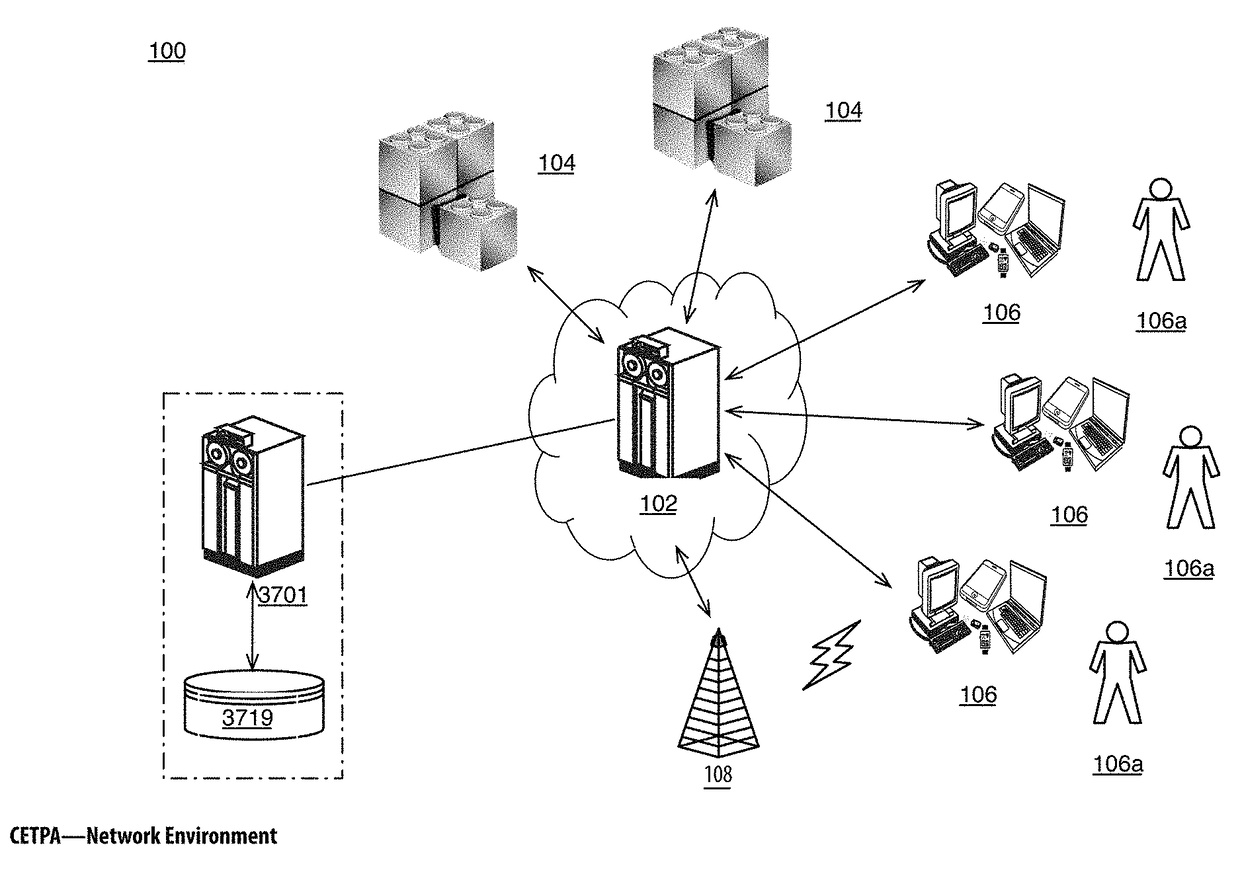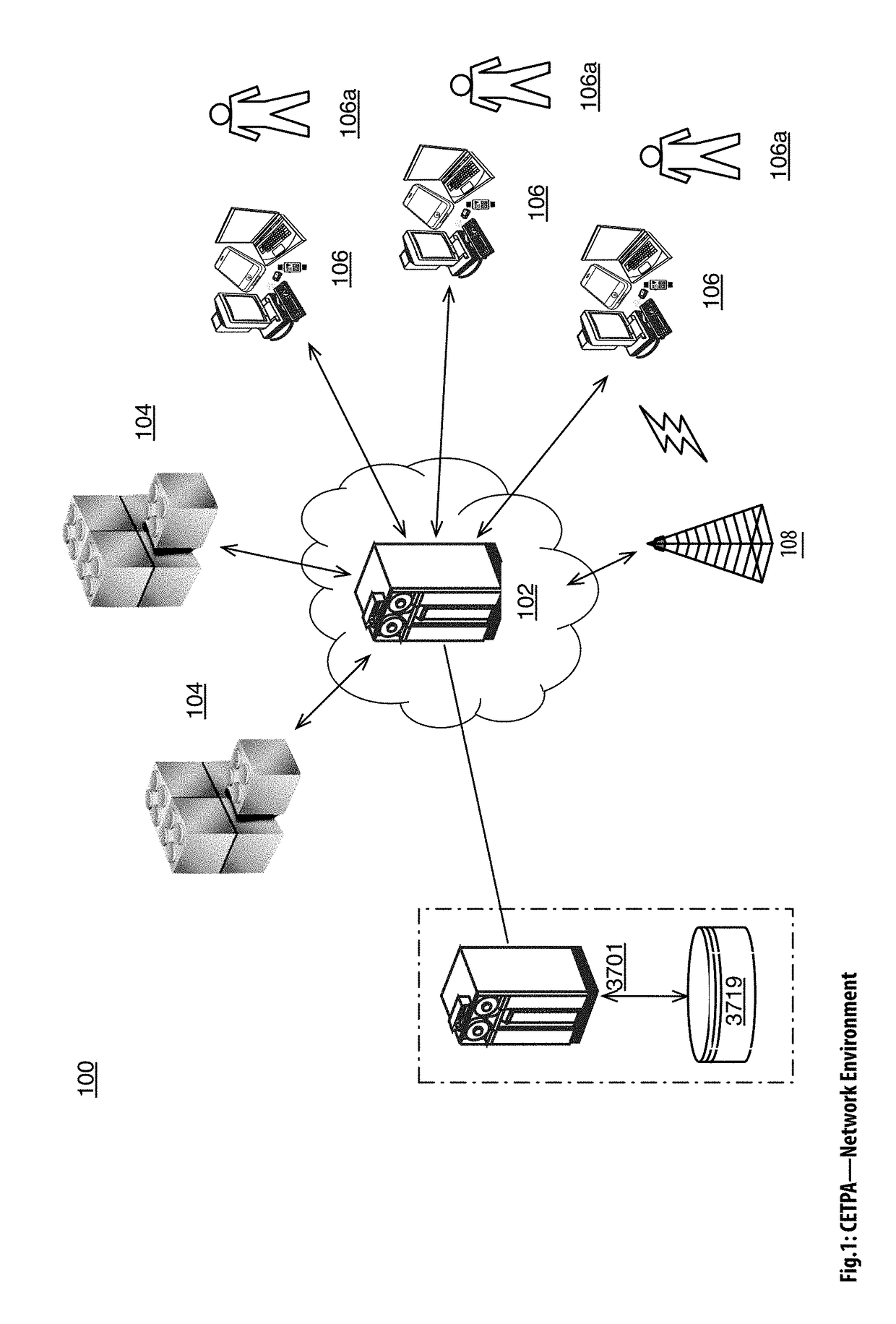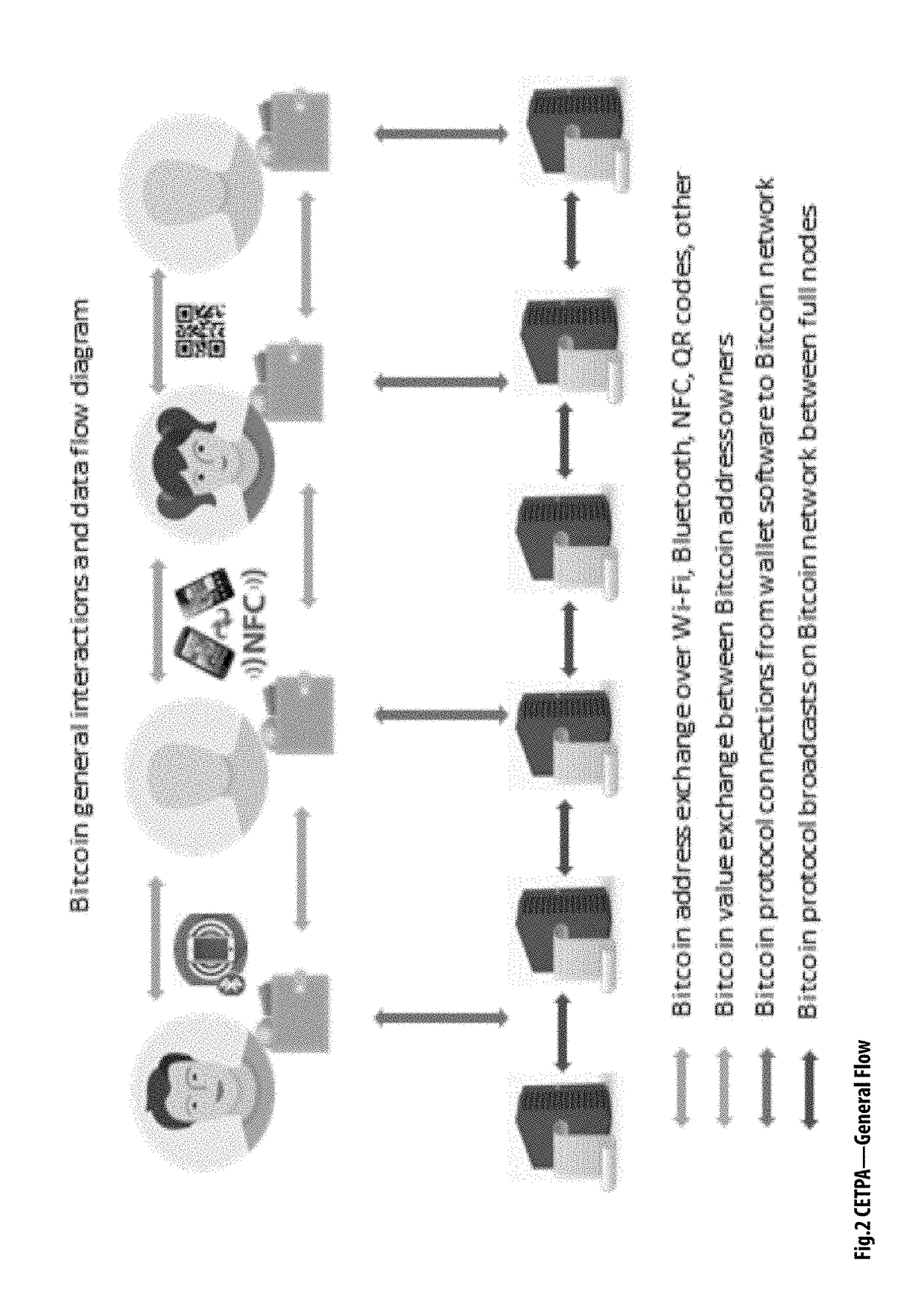Computationally Efficient Transfer Processing and Auditing Apparatuses, Methods and Systems
a transfer processing and auditing technology, applied in the field of computation-efficient transfer processing and auditing apparatuses, methods and systems, can solve the problems of fraudulent or erroneous transactions, no feasible way to quickly track migrants, and users of bitcoins not protected by refund rights or the ability to obtain chargebacks
- Summary
- Abstract
- Description
- Claims
- Application Information
AI Technical Summary
Benefits of technology
Problems solved by technology
Method used
Image
Examples
Embodiment Construction
[0048]The Computationally Efficient Transfer Processing and Auditing Apparatuses, Methods and Systems (hereinafter “CETPA”) transforms virtual wallet addresses or fractional order purchase request inputs, via CETPA components (e.g., Virtual Currency Component, Blockchain Component, Transaction Confirmation Component, etc.), into transaction confirmation outputs. The components, in various embodiments, implement advantageous features as set forth below.
INTRODUCTION
[0049]Bitcoin transactions are typically posted on a public, distributed ledger called a blockchain. The Bitcoin network stores complete copies of the blockchain on nodes that are distributed around the world. Anyone can install the Bitcoin software on a networked computer to begin running a node. Because the blockchain is public, anyone can see the complete history of Bitcoin transactions and the public addresses that are currently “storing” Bitcoin.
[0050]In order to move Bitcoin between public addresses, a user must prove...
PUM
 Login to View More
Login to View More Abstract
Description
Claims
Application Information
 Login to View More
Login to View More - R&D
- Intellectual Property
- Life Sciences
- Materials
- Tech Scout
- Unparalleled Data Quality
- Higher Quality Content
- 60% Fewer Hallucinations
Browse by: Latest US Patents, China's latest patents, Technical Efficacy Thesaurus, Application Domain, Technology Topic, Popular Technical Reports.
© 2025 PatSnap. All rights reserved.Legal|Privacy policy|Modern Slavery Act Transparency Statement|Sitemap|About US| Contact US: help@patsnap.com



